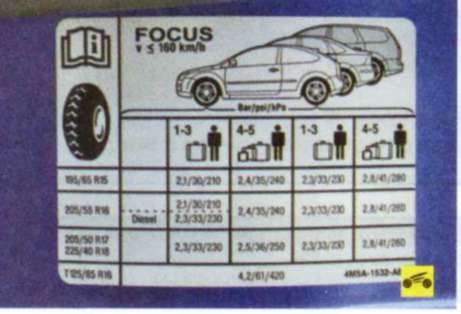Driving with the correct tyre pressure is important not only because it improves safety, but also because it can significantly improve fuel economy and keep your tyres in good condition for longer.
Contents
Ford Focus tyre pressure by year of manufacture
What to do if your tyre pressure warning light comes on
What is the Ford tyre pressure monitoring system?
Common Ford Focus tyre pressure sensor problems
The 2022 Ford Focus, which has 215/50/R17 V 91 size tyres, requires 33 PSI (or 2.3 BAR) on both its front and rear tyres.
| Year | Front Tyre Size | Front Pressure | Rear Tyre Size | Rear Pressure |
|---|---|---|---|---|
| 2005-2010 | 205/55/R16 V 91 | 33 PSI / 2. | 205/55/R16 V 91 | 30 PSI / 2.1 BAR |
| 2011-2015 | 215/55/R16 H 93 | 30 PSI / 2.1 BAR | 215/55/R16 H 93 | 30 PSI / 2.1 BAR |
| 2016-2020 | 205/55/R16 V 91 | 30 PSI / 2.1 BAR | 205/55/R16 V 91 | 30 PSI / 2.1 BAR |
| 2021-2022 | 215/50/R17 V 91 | 33 PSI / 2.3 BAR | 215/50/R17 V 91 | 33 PSI / 2.3 BAR |
Most Ford Focus models have a recommended PSI of between 30 and 33. If the PSI of your tyres is lower than that, you should top them up as soon as you are able to do so.
It shouldn’t matter too much if your tyres are slightly underinflated, but generally driving on anything less than 28 PSI is a cause for concern and could cause damage/decrease safety.
The tyre pressure warning light comes on when the pressure in one or more tyres falls 25% or more below the threshold allowance.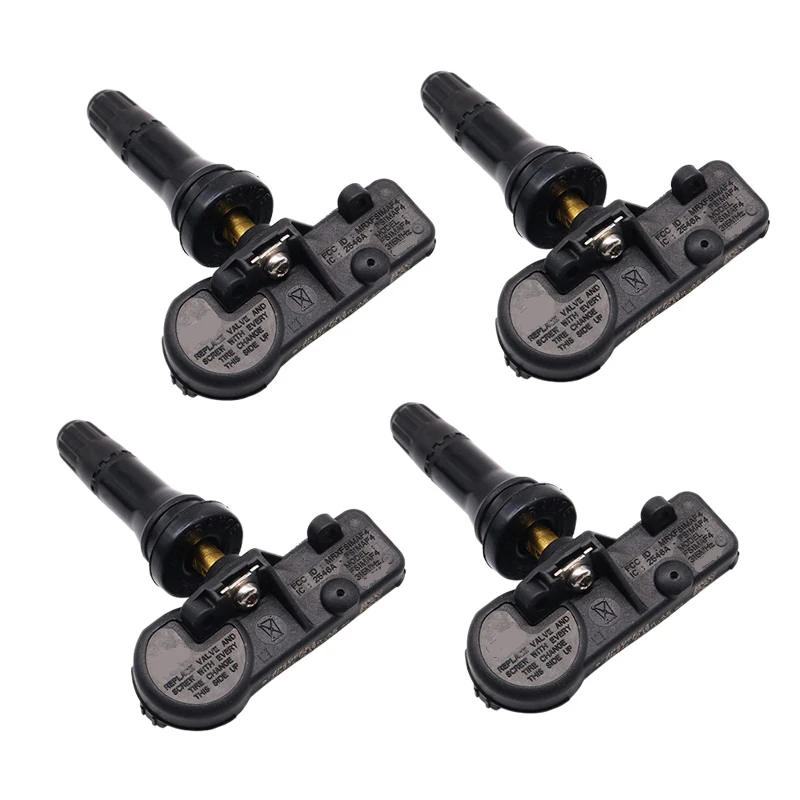 In the event that this warning light comes on in your Ford Focus, you might be wondering if you can reset the tyre pressure symbol.
In the event that this warning light comes on in your Ford Focus, you might be wondering if you can reset the tyre pressure symbol.
The answer is yes, you can - simply follow these instructions.
The tyre pressure warning light comes on for a reason and shouldn’t be ignored. The first thing to do is check the pressure in each tyre, and if it’s too low, top it up.
It’s a good idea to inspect your tyres for any signs of damage or punctures which could have caused the pressure to drop.
If all your tyres are inflated enough but the light is still on, your tyre pressure sensor could be faulty and might need replacing.
Get quotes
Use the up and down buttons on your steering wheel to navigate to “settings”. Next, scroll to “driver assist” and press “OK”, then scroll down to “tyre monitor” and press “OK” again.
Press and hold “OK” once more until you see the message “tyre pressure stored”.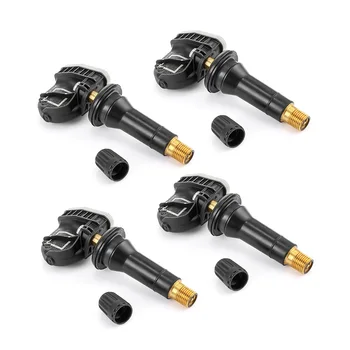
Alternatively, follow the instructions below:
Turn the ignition to the on position
Locate the hazard warning light button and push it 6 times in 5 seconds until you hear the horn
On the console you should see the message “train left front tyre” - deflate this tyre until you hear the horn again
Repeat this process with each tyre in the order indicated on the console
After you have done this with each tyre the console should say “training complete”
Now the system has been reset you can re-inflate all your tyres
The Ford tyre pressure monitoring system, often abbreviated as TPMS, constantly measures the pressure of your tyres and sends these readings to your vehicle. The information display within your car allows you to keep an eye on your tyre pressure at all times.
While the monitoring system isn’t a substitute for checking your tyres regularly, it does help to identify problems sooner so you can stop and either inflate or change your tyres as necessary.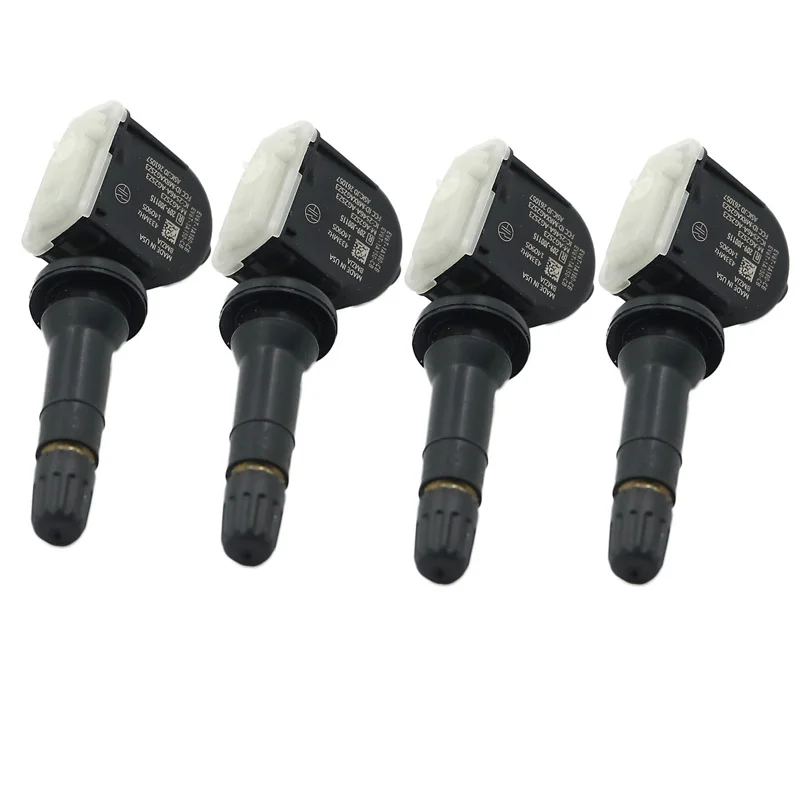
Here are three common problems encountered with the TPMS.
Faulty pressure sensor. Pressure sensors are located in the tyres and operate using batteries which eventually run out. When this happens the whole sensor usually has to be replaced.
Pressure sensor lost memory. If the control module and sensors temporarily lose contact this can sometimes cause a loss of memory. Reprogramming the sensors will require a TPMS reset tool, or you could find a local mechanic to do it for you.
New tyres. When you have new tyres fitted the sensors need to be reprogrammed or you will see the tyre pressure warning light.
If you need a new tyre for your Ford Focus, you’re in the right place! Drivers who book tyre fitting via WhoCanFixMyCar save £29 on average.
Compare tyre fitting prices
Enjoyed reading this article? There's more where that came from! 👇
Ford vs Toyota - which is best?
Best car tyre sealant
What should I do if I have a slow puncture?
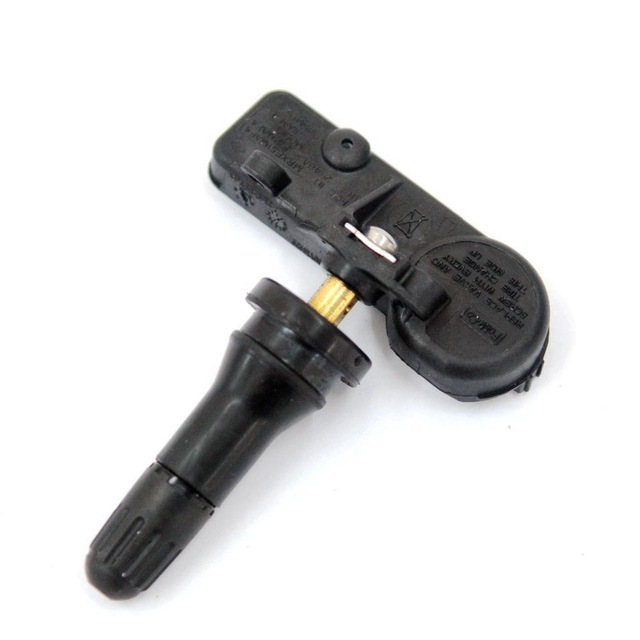 com
comThe 2021 Ford Focus has a minimum recommended tire pressure of 33 pounds per square inch (PSI) in both its front and rear tires.
Keeping the correct amount of air pressure in your tires is part of being a responsible driver. If your tire pressure is too low, you risk a blowout—which is both dangerous and could lead to a costly repair.
Jerry, the car insurance expert and trusted comparison tool, is here to help you manage your Ford Focus tire pressure. We’ll walk you through how to check tire pressure and how often you should check it, as well as provide some stellar ways to save money on your Ford Focus car insurance costs. Let’s get started!
2021 was the latest Ford Focus model year. A 2021 Ford Focus requires 33 PSI in both its front and rear tires. Most older Ford Focus models have a recommended PSI between 30 and 33. If tire pressure dips below this point, you should inflate your tires as soon as possible.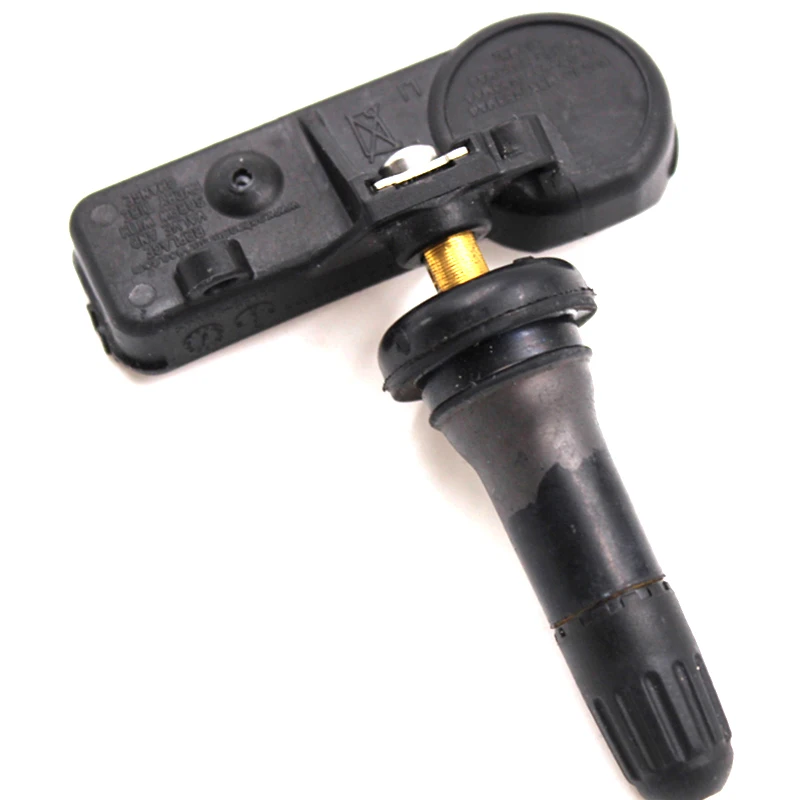 Driving on tires with less than 28 PSI is dangerous and could damage your car.
Driving on tires with less than 28 PSI is dangerous and could damage your car.
| Vehicle | Front tire pressure | Rear tire pressure |
|---|---|---|
| 2021 Ford Escape | 35 PSI | 35 PSI |
| 2021 Ford Expedition | 39 PSI | 39 PSI |
| 2021 Ford Explorer | 33 PSI | 33 PSI |
| 2021 Ford F-150 | 35 PSI | 35 PSI |
| 2021 Ford Fiesta | 30 PSI | 26 PSI |
| 2021 Ford Mustang | 32 PSI | 32 PSI |
Compare insurance quotes from 50+ carriers with Jerry in under 45 seconds
ZIP Code
ZIP Code
Find Savings!
Find Savings!
4.7/5 App Store Rating. Trusted by 2+ Million Customers.
MORE: How low can your tire pressure go?
All new Ford Focus models come equipped with Ford’s Tire Pressure Monitoring System (TPMS), which routinely checks the air pressure in each tire.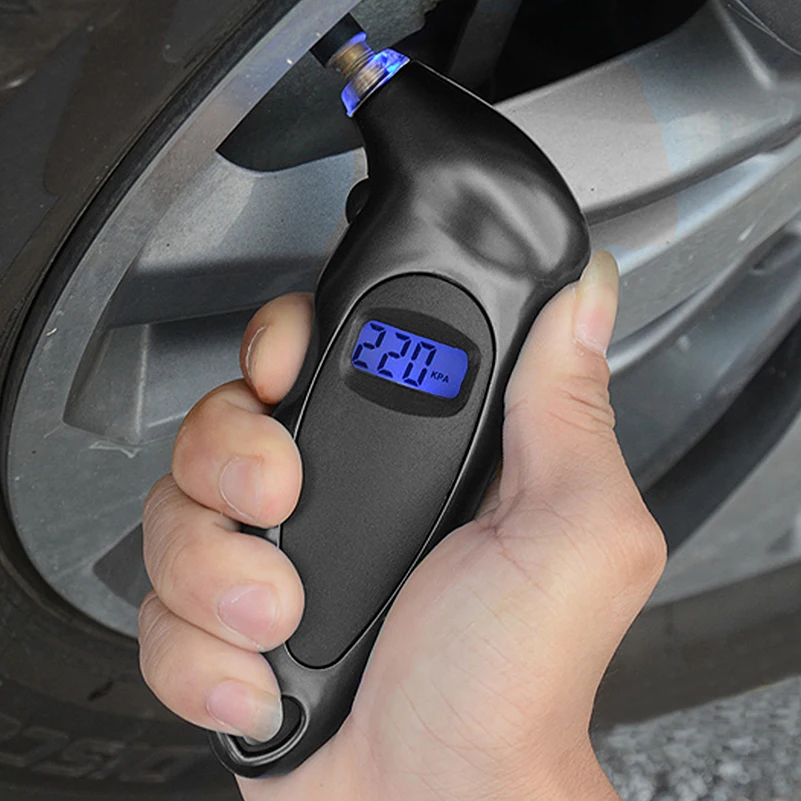 The TPMS will activate a warning light should your tire pressure dip below an acceptable threshold. If you have a newer Ford Focus, the air pressure of each tire should be displayed on your Focus’s touchscreen display.
The TPMS will activate a warning light should your tire pressure dip below an acceptable threshold. If you have a newer Ford Focus, the air pressure of each tire should be displayed on your Focus’s touchscreen display.
However, the tire pressure monitoring system is not a replacement for manually checking your tire pressure using a pressure gauge. Simply remove the valve stem cap on each tire and insert a tire pressure gauge onto the valve stem. The gauge will give you a reading. If it’s below 33 PSI, you’ll want to add more air to your tires.
If your tire pressure is low, your vehicle’s performance and fuel efficiency may be affected. You may notice an uneven ride and your car will likely get lower fuel economy than usual. If you notice either of these things occurring, it’s a good idea to check your tire pressure!
You should check your Ford Focus tire pressure at least once a month.
Tires degrade over time due to many factors, including weather and condition of use. It’s a good rule of thumb to replace your tires every six years or if you notice any of the following:
It’s a good rule of thumb to replace your tires every six years or if you notice any of the following:
Bulges or blisters on the tires
Tire tread that has worn down to less than 3/32 inches
Cracking in the tire tread grooves
Cuts or separation in the tire tread, shoulder, or sidewall
MORE: Low tire pressure in cold weather, and how to fix it
A common problem for Ford owners—and all car owners for that matter—is a TPMS light that stays on even after tire pressure has been returned to normal. If you’ve reinflated your tires and your TPMS warning light is still on, you should:
First, drive at 50 mph for at least 10 minutes. This should reset the TPMS.
If this doesn’t do the trick, start the car’s battery, but not the ignition. Find the TPMS reset button, which is usually near or beneath the steering wheel, and hold it until the dashboard light blinks three times.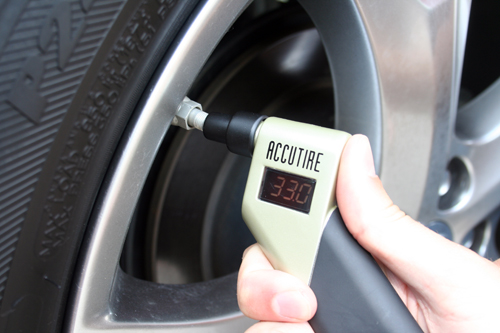 Release the button and start the ignition.
Release the button and start the ignition.
If your TPMS light still won’t turn off after the above steps are taken, you should take your vehicle to a trusted mechanic to diagnose and fix the issue.
MORE: Ford common problems
Keeping your Ford’s tire pressure in check will help you save money by avoiding costly repairs. What’s another way to save money on car ownership costs? Why, comparison shopping with Jerry, of course!
Jerry can help you save heaps of money on your Ford car insurance costs. In less than 45 seconds, Jerry collects all of your information from your existing insurer. Choose from competitive quotes from top insurance companies and Jerry takes care of the rest—including securing your new policy and helping you cancel your old one upon request.
No long forms. No calling around. No hard work. Just savings. The average Jerry user saves over $800 a year on car insurance!
“Jerry got me insured through Allstate with $100 of savings each month compared to my previous insurance.
The customer service was excellent, and they even detected an error my previous insurer didn’t!” —Warren H.
ZIP Code
ZIP Code
Find Savings!
No long forms. No spam calls. Free Quotes.
4.7/5 App Store Rating, 8,100+ Reviews
Trusted by 1.5+ Million Customers.
The manufacturer strictly regulates the normal pressure in Ford Focus tires of different generations. A special plate is installed on the car body, where the required information is applied by the factory. Buyers of used cars see that the nameplate is completely missing or the information on it is not readable.
Content
 1 Focus 3
1 Focus 3 The following are recommendations for boosting the wheels depending on the season and the load on the axles of the machine.
For the smallest rollers in size 195/65 P15 is set to 2.1 and 2.4 atm for partial and full load. On the front axle of the car, the indicator does not change. Swapping is needed only for stern.
On larger rollers as standard, the manufacturer specifies 2.1 and 2.3 bar boost for the front and rear of the machine. On diesel versions, where a heavier engine is mounted, rubber must be pumped up to 2.3 atm from the main side.
On the rear axle in full load mode of 5 people + cargo, according to the passport, tires should be pumped up to 2.8.
On 205/55 R17 wheels, the inflation range is even more different. On Russian roads with an abundance of pits and potholes, tires should be inflated in the range of 2.1 / 2.4 on the front and 2.1 / 2.8 on the rear bogie.
On Russian roads with an abundance of pits and potholes, tires should be inflated in the range of 2.1 / 2.4 on the front and 2.1 / 2.8 on the rear bogie.
Experienced drivers recommend holding the air slightly less than recommended in the city. Thanks to this, you can increase the comfort of movement.
On the first generation of cars, slopes from 15 to 17 radius are mounted. The required information can be found on the door pillar on the driver's side. Factory recommendations are relevant for hatchback, station wagon and sedan versions.
In a car that has undergone restyling, tire sizes have not changed. Stock rollers such as R15, R16 and 17 inches are also installed here.
In the standard table, here and in other modifications, only information on pressure for the warm season is indicated. In winter, experienced drivers recommend pumping tires at the rate of +0. 1 bar, for every -10 degrees of temperature drop. This will compensate for the compression of the air in the tire bladder.
1 bar, for every -10 degrees of temperature drop. This will compensate for the compression of the air in the tire bladder.
The situation is similar with the third generation. Similar tires and wheels are mounted here. Also, the load on the axle of the car has not changed. In body versions such as sedan and station wagon, the pumping is kept the same.
The manufacturer insists that it is necessary to check the boost in the wheels with a certain frequency. To facilitate the procedure, special sensors are installed on cars of the latest generations. Sensors are mounted inside the tires and constantly monitor the correct inflation of rubber.
If the tire is lowered below the set norm, the corresponding inscription will light up on the tidy display.
If such a malfunction lights up, check the inflation of the wheels of the machine. If the boost is done correctly, after 20 km, the error will disappear.
Below are the optimum values for different wheel sizes.
| Wheel size | Pressure, Atm. | |||
| 235/40 R18 | 2.1 | 2.4 | 2.1 | 2.8 |
Leave a review
The safety and behavior on the road of the second generation Ford Focus car depends on many indicators, including tire pressure. It affects fuel consumption, dynamics and stability, comfort and tire wear. Pressure is the amount of air that falls on a certain size (usually measured in kg per cm²). In our article, we will analyze in detail what pressure should be in the wheels, how to measure it correctly and what is needed for this, as well as what threatens the wrong pressure on the Ford Focus 2.
Contents
This process requires the use of a special device called a manometer. It can be of several types, including:
Dial gauges are the simplest and are based on a spring. The latter have a similar principle of operation, except that they use a coil spring. The most convenient and modern is the electronic pressure gauge, since it has a screen that displays tire pressure. The latter option has a rather complicated structure, and therefore we will not dwell on this issue.
In order to decide which pressure gauge is best, you need to know about their advantages and disadvantages. The switch version has a small price, but it is characterized by high accuracy. Its disadvantages are fragility, because when dropped or hit, it quickly breaks, and it can no longer be repaired.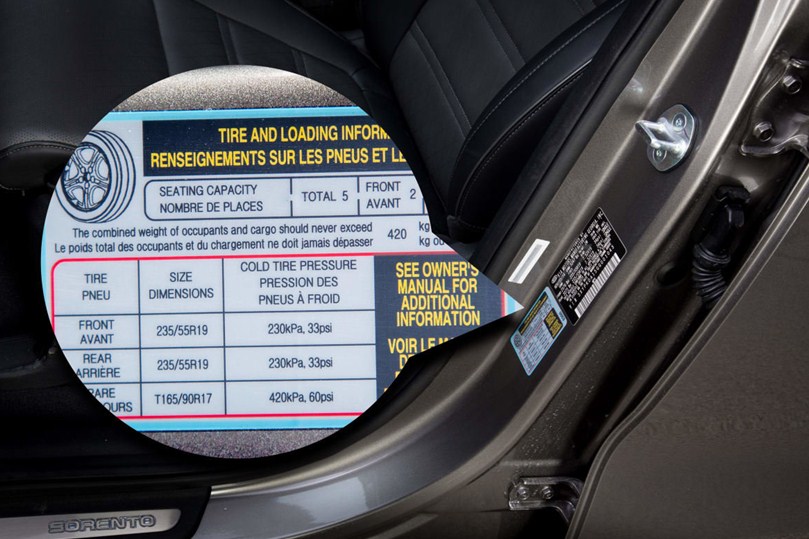
If you're looking for a more durable and reliable option, a mechanical pressure gauge is worth a look. In most cases, it has the shape of a pen, but low accuracy is called its significant disadvantage. As for the electronic pressure gauge, it has the highest cost and accuracy. Its error is at the level of 0.05 bar, which is an excellent result compared to other types. Base your choice on needs. The experience of many motorists suggests that if you need a pressure gauge for domestic use for your Ford Focus 2, then the simplest option will do.
The tire pressure must be checked when the tires are cold, as this is the state in which they will correspond to the outside temperature. If you measured this indicator immediately after a long journey by car, then it will be incorrect. Also, do not forget that you need to check each wheel, and it is wrong to draw conclusions from the results of one measurement.
It should also be noted that if you do not have time, then you can trust tire fitting professionals who will check the pressure for a penny and, if necessary, pump up the wheels. Carrying out such actions should be a habit, as it affects the safety and comfort of movement.
Carrying out such actions should be a habit, as it affects the safety and comfort of movement.
Ford Focus 2 can give its owner maximum comfort and reliability if the car is in good condition and properly serviced. When the tire pressure does not meet the requirements, this leads to certain consequences. Insufficient tire pressure leads to:
Excessive tire pressure can cause the following:
